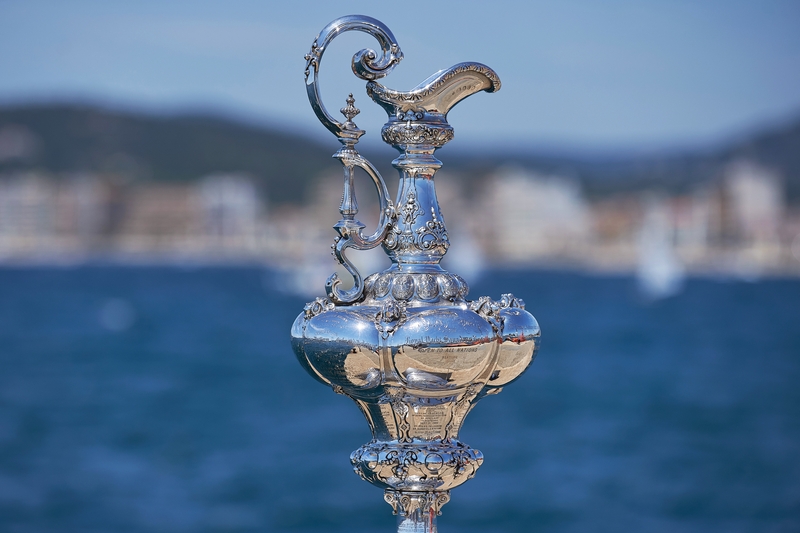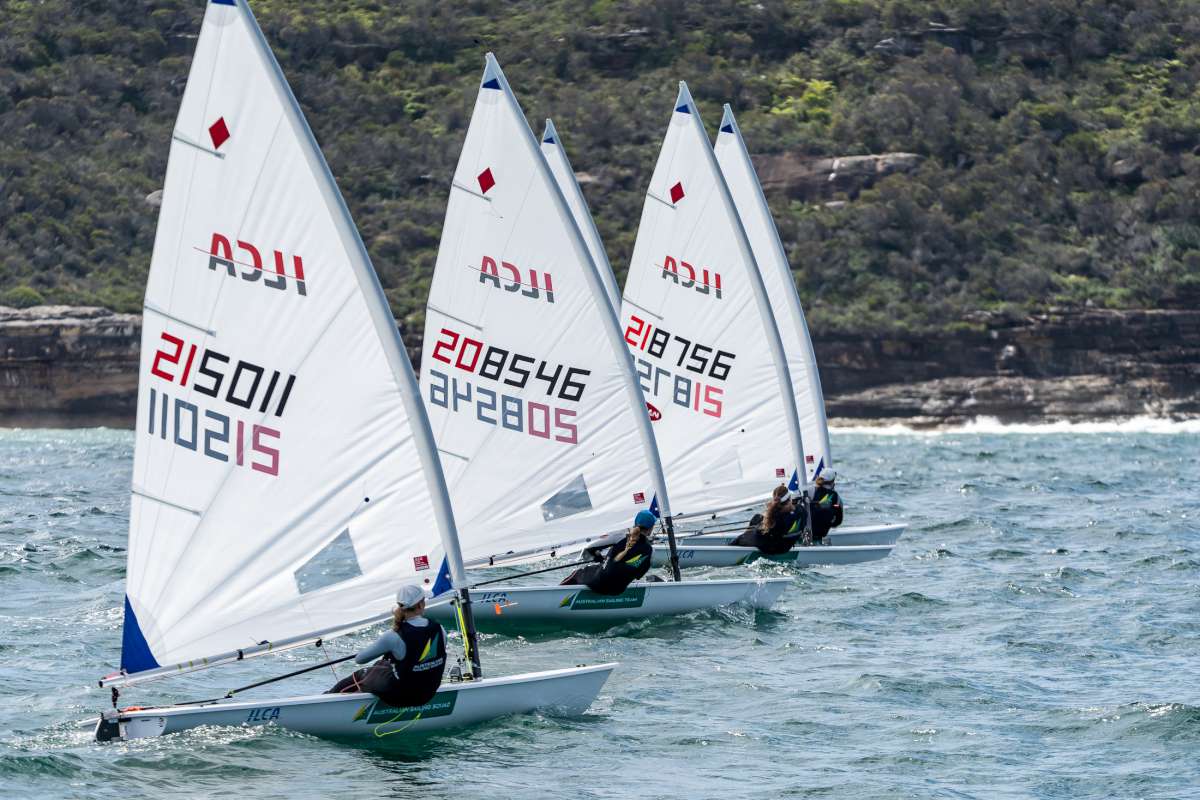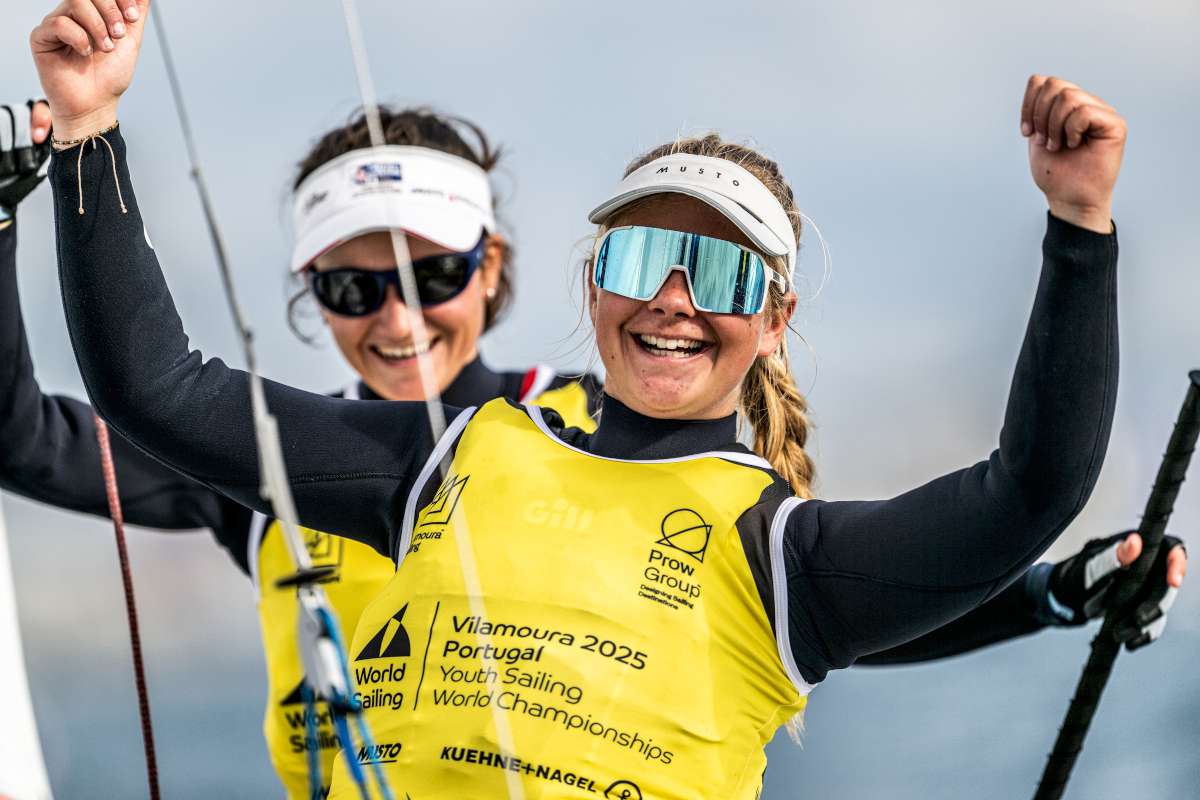I had been planning for quite some time to take Redwing north to Boatworks on the Coomera River as I had heard very good reports, it seemed like just the place for an extended haulout. My first booking there had been in early March but thanks to a record flood and a river bar turned dangerous, I had delayed.
Still, with a boat rotting out of control I knew I could not delay any longer. Besides, my partner Kerry was going to join me after the haulout and we were going to have a holiday afterwards with a week’s sailing on Moreton Bay. Redwing was going on her first cruise.
Tuesday the 27th June dawned overcast and the discovery of more rot in the beamshelves just aft of the mast did nothing to brighten my mood; until David and Rosemary Webb turned up with coffee and sausage rolls. David was sailing up to Boatworks with me.
Push off
At 10.25am we crossed the Tweed Bar with only a light swell coming through. Once we were away from the river bar, I shut down the outboard and Redwing was sailing with a light south-westerly breeze and a course of 335 magnetic. Sticking close inshore to catch the counter current, we passed Currumbin at 11.45am and set a course towards Burleigh Heads for the next leg.
The GPS was registering 2.5 knots to 3.5 knots and, after Currumbin, the occasional 3kn to 4kn. This was under sail alone, considering the state of the growth on the hull Redwing was doing well.
12.37pm saw us off Burleigh Heads. The course is now 300 magnetic for the run up to the Seaway.
We pushed in through the Gold Coast Seaway at 3.25pm, motorsailing slowly against a choppy ebb tide. Once inside we turned north to look for a suitable anchorage for the night.
4.15 pm saw us dropping the hook off Roe’s Camp on South Stradbroke Island amongst several other vessels that looked decidedly unloved, including what looked like a steel Jay Benford Badger rigged as a junkrig schooner. The vessel had a painted-over ornate dragon on each bow.
Redwing had just completed her first coastal passage. Total distance 16.1 nautical miles with an average speed of 2.5 knots and a maximum of 6.7 knots, but I am not sure I believe it.
Next morning I raised anchor and David took the helm. We motorsailed up into the Coomera River, but lowered the rig as the wind was light and on the nose. Further up the river David offered his help if I needed it.
I was to remember those words later.
Two hours later, we arrived at Boatworks, tied up at an empty berth and got permission to stay there till I could move into the lift-out bay at 4.30pm. That done and a couple of coffees under our belts, I borrowed a courtesy car and dropped David at the railway station for his trip back home on Russell Island.
Thursday morning and Redwing is in the slings and on the hard by 8.00am. By 9.00am I was looking at a horror movie of rot.
During the initial walk-around inspection, I managed to stick my finger through the nine millimetre plywood planking on the starboard quarter. I started with removing the chainplates as I did not need them with a free-standing mast and there was a certain amount of rot around them. Some of the bolts I could not undo, but the backing blocks of Flooded Gum were so rotten the bolts just pulled out though the timber. If that was not bad enough I discovered a previous side-deck repair had not been done with
exterior grade ply as I had thought and I was confrontated by an expanse of delaminated ply. I then moved to the port quarter of the transom. This consumed the rest of the day as most of the transom framing was rotten. How the outboard stayed bolted on still puzzles me.
Side note: why are so many sailors named David?
He suggested patch her up, do my Moreton Bay trip and then take her home to the farm for proper repairs.
That lifted my spirits and I got started. I rang David, the other David that sailed up with me, he agreed to come down and help for a few days.
Tomorrow, when the war began
David arrived much to my relief as his ideas on repair are better than mine. By the end of the day large sections of planking on the starboard side are missing. The beamshelfs on both sides are totally shot and need replacing.
A trip to Bunnings saw us return with a sheet of 9mm marine grade ply and several lengths of Merbau timber to replace the beamshelfs.
With large chunks of decking and hull planking missing, we realised it was going to be a cold night onboard.
By this stage the days were blurring into each other, but what followed was several days of David cutting out rot, replacing the starboard side beamshelf and sections of stringer, then starting on the port side. Meanwhile I concentrated on replacing the side decks and replanking the hull sections.
At the end of each day we would limp to the showers, go and have a beer at the Gallery and then tip something out of a tin for dinner and fall asleep. Well, David did, I would lay awake thinking about how I was going to pay for all this.
I hit up another friend for a loan and, with my birthday coming up, I asked my loving adult children to give me money instead of presents. I even had two people I barely know donate money to the cause.
David had to go home for a few days to attend to his home building project. In the meantime I concentrated on getting bits glued and screwed back on. I was due to launch on the 6th July, which happened to be my 65th birthday but knew that was not possible. After doing my sums I realised I could delay till Monday the 10th: breather.
David returned on the 7th bearing fresh food and, wonder of wonders, a strawberry-covered chocolate mud cake made by his wife for my birthday. She even made me a card with junk-rigged boats on it.
Sitting in the cabin that night, David suggested a major modification. If we ripped out the cockpit, which I had wanted to change anyway and extended the cabin back a bit, I could get two quarter berths and a substantial increase in the amount of usable space. Not to mention a better cockpit layout. I thought about it and said I was game but let’s see how we go for time.
The next day David had finished working on the port side and focused on rebuilding the transom. Discovering yet more rot in the cockpit, we decided to go ahead with the cockpit rebuild.
That night we went to bed with a totally gutted hull aft of the companionway and the next morning it rained. With the boat draped in tarps, work continued and, despite the rain, we achieved more than we thought we would.
By Monday late afternoon, David had the cabin extension and new cockpit installed, then had to leave. With the launch date delayed till Tuesday 3.00pm, I still had to get the outboard back on and hooked up to fuel and battery, get the pushpit back on and get the hull antifouled, which included a sealing coat as I was changing from Altec5 to Jotun. The stress was building again.
Only a few days’ previous I had commented to someone that even though I was working long, hard hours and every bit of my body ached, I was actually enjoying myself for once.
Made me wonder what had been going on in my life that made this seem like fun.
The next day, my partner Kerry turned up and she set to cleaning the dust and sawdust from inside the cabin while I got a coat of antifoul on. I got the outboard sorted, but time was running out; then one of the staff came along and said I could have a few more hours as they were going to put me in the slings overnight and launch me first thing Wednesday morning. This gave me time to get a second coat of antifoul on.
Then we found out they could not leave us in the slings overnight and they would launch us at 3pm on Wednesday. I pointed out I couldn’t afford another night on the hard, so it was decided we could have the night free. Thank you, Boatworks. So yet another breathing space to get just a bit more done.
Full engagement
When launch hour did come around, Redwing went back into her natural element, with large areas of bare ply in the cockpit and cabin extension and large sections of unpainted but epoxied topsides. Definitely a vagabond look about her.
Boatworks is an amazing place and the facilities and staff are top grade, but when we sailed off back down the river it was with a deep sigh of relief.
We reached the mouth of the river as the sun was setting and, with a good southerly blowing, I figured we would sail the four miles up to Tipplers Passage for the night. So I raised the rig and away we went. Straight onto a sandbank!
There we were with the keel thumping, I quickly dropped the rig and was trying without success to motor back off the bank.
A look at the chart showed we were on a narrow finger of shoaling ground with a deep hole not far away. Time to try something different, so I raised the rig and sheeted in to heel her over and it worked.
As it was now dark, I decided we would stay put for the night but, with a strong breeze and a long fetch, it was far from comfortable. We had a chat about it and I decided we’d try a night motor to Tipplers, so up with the anchor and with Navionics lighting up the phone I did the four nautical miles in the dark without any trouble. Apart from when Kerry informed me we were sinking.
Looking in through the companionway I could see a lot of water running from somewhere under the cockpit to the bilge. A quick look showed it to be the outlet hose from the electric bilge pump, which due to lack of time had not been ducted outboard. It was recycling water from a slow keelbolt leak, no doubt started when we ran aground.
Okay good, we are not sinking.
Arriving at Tipplers, I chose to anchor just a little way in, as I did not know the area very well. Next morning dawned sunny but cool, so I told Kerry to stay comfortable in the cabin and I would take us further up and find a better anchorage.
I started the outboard and raised the anchor and put the outboard in reverse. I was horrified to see the outboard suddenly drop straight off the outboard bracket and disappear into the water. I yelled out to Kerry what had happened as I got the anchor back down.
Standing in the cockpit, I had finally reached the end, I did not want to do this anymore. Kerry took one look at my face and gave me a hug.
I looked over the stern and was surprised when I realised I could see the outboard. My initial thought was “oh, it is not that deep”, but then I realised it was hanging off the battery lead. I quickly got a line and put a loop in it. My thought was, if I can get a loop over the powerhead I can get it back onboard. So I am trying to get this loop to sink down far enough when Kerry says why don’t you use that hooky thing on a stick? Oh, you mean the boathook!
It worked, but I did not quite have the strength to lift it back onto the bracket. Luckily I knew that David, the other David, was not far away on his yacht and I just happened to have his mobile number. With his help I got it re-attached.
It turned out that for some reason I had glued a section of ply onto one end of the ply pad on the bracket and I had bolted the bracket back on upside down and then clamped the outboard to the glued-on bit. Which parted at the glue line.
I took the cover off and poured fresh water over the motor, then pulled out the sparkplugs and, by cranking the motor over, was able to clear the water out of the cylinders. It still would not start, so I knew was going to have to strip down the carburettor, for that I wanted a sheltered anchorage.
Once again the anchor came up and I raised three panels and slowly sailed further up the passage and found a better spot. Pulling the carby off was a challenge as I had never done it before. Luckily I had the manual stored on my phone, which helped but did not hold my hand through all of it. I had to work out some of the process by trial and error.
I did it though and when I pressed the starter it started. A huge relief.
Sitting back in the cockpit at sundown, Kerry with a glass of red and me with a well-earned beer, Kerry suggested we stay another day and just relax. Good idea.
The next day we did just that: put Beetle, the dink, over the side and rowed ashore for a coffee and a snack at the restaurant and just took it easy. For the first time in over two weeks I relaxed.
Retreat
The plan had been to continue up into Moreton Bay and catch up with friends at Horseshoe Bay on Peel Island but with a keelbolt still leaking and large amounts of bare and epoxy coated plywood, it was decided we would head for home and get it finished.
The following morning, with only a light breeze we motorsailed back to Boatworks so that Kerry could collect our car and drive back home. I had a bite to eat and a shower before hopping back aboard for the long run back down the river and from there to Bumm’s Bay at Southport.
I had been motoring for a while when I realised I did not recall any of the scenery I was passing. A change of scale on the Navionics screen showed that I had taken a wrong turn and was now heading up the north arm of the river and back towards Tipplers. So what to do, turn around and go back?
Bugger it, let’s go exploring instead.
It was at this point I had a headspace shift and I started to enjoy myself. Coming out the top end of the river back into the Broadwater, I was presented with a superb northerly which gave me a magnificent run all the way down to Bumms Bay. Where I discovered all the good sheltered spots were taken and so had to drop the pick in fairly exposed waters off Southport VMR.
That evening I was treated to quite a good thunderstorm but I was cosy, despite being subjected to the wash of passing vessels. The next day was Sunday and with rain predicted and a southerly change expected early in the day, I chose to sit tight and do nothing but read and sleep: a day of well-earned sloth.
Monday dawned sunny with a light five knot SW breeze and a northerly change predicted, not what I wanted but I hoped with luck the northerly would kick in and give me a good run back to Tweed Heads.
Once out through the Seaway I shut down the outboard and sat back to enjoy the peace and quiet of light air sailing. We were averaging around 2.4kn to windward in a breeze that was only about 5kn if it was lucky.
After an hour I figured it was going to be slow trip back even if I did have whales to look at, so back to the noise of the outboard. As we moved down the coast I kept our course at around 150 magnetic which put us about 2nm to 3nm out, hoping to pick up the East Coast Current, as the breeze was becoming increasingly lighter.
By the time we were off Currumbin the breeze had gone and an oily swell had taken its place. The last leg to the Tweed Bar seemed to take forever and the fact that the fuel tank was starting to get a bit light-on did not relax me.
The Tweed Bar turned out to be almost flat with the tide just starting to flood, which gave an easy run in.
True to form, the northerly kicked in as soon as I was back in the river, the upside being it gave me an added push back up the river. I was getting down to less than five litres of fuel in the tank, so any breeze was good. The northerly stayed fairly light, so it was motorsail around into Boyds Bay and the motor only for the last short stretch back to the wharf.
The end of three very interesting weeks. ≈























